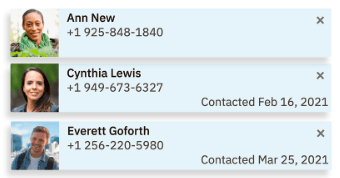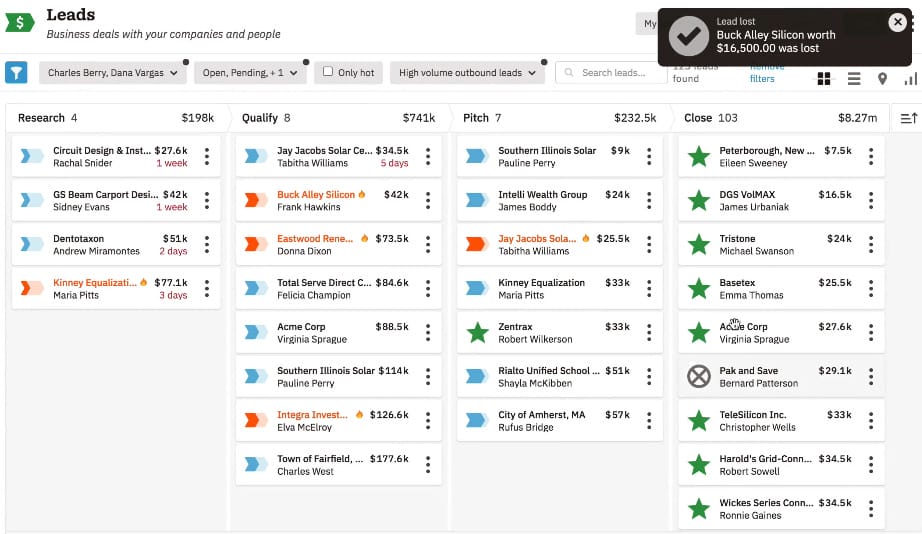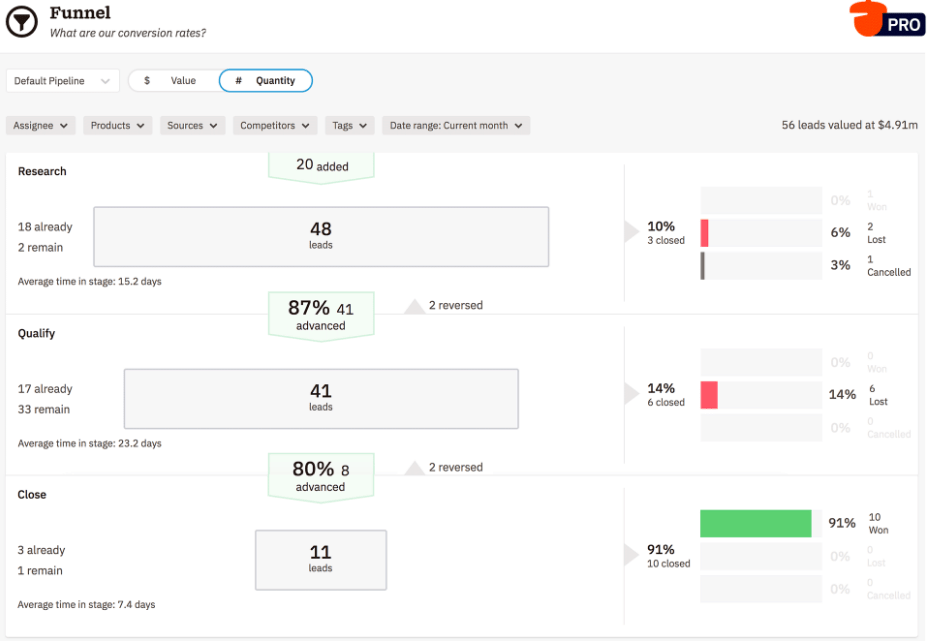
Customer relationship management (CRM) platforms like Nutshell help you collect valuable data from your audience, sales processes, and marketing strategies.
CRM data is an invaluable tool that helps you improve your sales and marketing efforts to earn a higher return on investment (ROI) and power business growth.
But what exactly is CRM data, and how can you organize it for the best results? Keep reading to find the answers to those questions and more.
And don’t forget to sign up for our Sell to Win newsletter for even more free sales and marketing tips from our experts!
CRM data is information from your current customers or clients, leads, sales processes, and marketing strategies that your CRM platform collects and stores.
This information helps you learn which strategies drive the best results and better understand how your audience interacts with your business.
With these insights, you can launch targeted sales and marketing initiatives that reach more members of your target audience and optimize your existing strategies to drive more revenue.
So, what types of data does a CRM collect? There are typically four types of CRM data:
Let’s explore each one in more detail!
Identity data is descriptive information you can use to identify your customers, leads, and prospects.
Identity data includes information like:

Identity data is crucial for staying in touch with current customers and forming strong relationships with prospects. For example, by collecting prospects’ email addresses, you can send them email marketing messages to nurture them toward conversion.
Nutshell enables you to implement lead generation forms throughout your website to collect valuable identity data from your leads and prospects, including their name, email address, and more. Plus, you can customize the forms to ensure you collect the info you need most.
Descriptive data describes a lead or customer with contextual information or characteristics.
In other words, descriptive data helps you learn more about your audience’s lifestyle and interests.
This data includes information like:
By collecting descriptive data, you can learn about your audience on a more personal level to understand their interests and motivations.
With this information, you can provide more personalized experiences across your site and marketing messages that resonate with them, leading to more leads and conversions for your business.
Need help collecting descriptive data? Nutshell allows you to automatically capture lead descriptive data from your website and use those insights to create personalized messages that encourage your audience to convert.
Quantitative data is numerical data points and metrics that help you interpret how your audience interacts with your brand as well as the success of your sales and marketing strategies.
This type of data includes:

By tracking quantitative data in your CRM, you can better understand how your audience interacts with your brand and website and leverage those insights to improve your sales and marketing efforts.
For example, if you provide multiple types of products, you can track which products your customers buy. Then, you can send them emails recommending other products they would be interested in based on their previous purchases, enabling you to boost your sales.
Nutshell offers comprehensive sales and audience reports that allow you to track your sales performance, view the phone calls and interactions of your customers, and much more.
Qualitative data helps you learn about your audience’s behaviors and attitudes related to their buying decisions. Unlike quantitative data, qualitative data is subjective.
You can gather qualitative data by launching surveys, conducting activity tracking, or having in-depth discussions with your audience and storing that information in your CRM for easy access.
A few examples of qualitative data include:
When you collect qualitative data in your CRM, you can understand how your audience feels about your products or services, allowing you to gather valuable feedback.
With those insights, you can improve your products or service and optimize areas of your website to ensure your prospects and customers always have the best experience.
Need help collecting qualitative data? Let Nutshell help. With Nutshell, you can send automatic email drip sequences every time a customer or prospect completes a specific action.
Now that we’ve discussed the different types of CRM data you should collect, let’s dive into how you can structure your data.
Once you have all that data, it’s essential to keep it organized so you can easily analyze it and gain valuable insights into your audience and strategies.
Here are just a few examples of how you can structure and manage the data in your CRM:
When it comes to CRM data analysis, it’s essential to track and analyze the status of your leads in your sales funnel.
Lead status helps you understand how many:
For example, in a CRM like Nutshell, you can easily view the status of every lead in your sales pipeline in one place.

You can also see every interaction they’ve had with your brand so you can ensure you send the right messages to them in the future that will encourage them to convert.
By analyzing the status of your leads in your CRM, you can track how many leads are in your sales funnel and their current lifecycle stage. As a result, you can ensure you keep on top every lead that enters your funnel so you never miss out on a potential sale.
Take advantage of your CRM platform’s contact management features to keep all your identity data in one place for access.
For example, Nutshell’s CRM software is your central repository for customer information. You can store email addresses, phone numbers, and more for every lead and customer your brand comes into contact with.
And the best part? Nutshell collects this information automatically as leads fill out the forms on your website, so you don’t have to lift a finger.
By managing your contacts, you can easily find the information you need when you want to get in touch with your leads and customers, making it easy to build strong relationships that turn into sales and customer loyalty.
If you want to measure the success of your sales processes and marketing strategies, tracking your conversion rates is essential.
Some CRMs, like Nutshell, allow you to view conversion rates at each stage of your sales funnel and identify where deals are getting stuck.

By taking advantage of your CRM platform’s conversion rate tracking features, you can easily see which strategies and processes drive the most conversions for your business.
As a result, you can optimize your processes and patch any holes where your leads fall out of your funnel to maximize your sales and revenue even more.
So, why is collecting CRM data important? CRM platforms are one of the best ways to gather deep insights into your leads and marketing strategies.
Check out some of the benefits of collecting data in a CRM below:
Searching for a platform that makes CRM data analysis and management a breeze? Say hello to Nutshell.
Nutshell provides custom, easy-to-understand reports to help you track your sales performance, forecast future sales, monitor lead volume, analyze lost deals, and much more with ease.
Plus, Nutshell helps you implement lead generation forms across your website so you can gather and analyze valuable first-party data from your audience.
See how Nutshell provides the perfect data collection and analysis solution by getting started with your free 14-day trial today!

Join 30,000+ other sales and marketing professionals. Subscribe to our Sell to Win newsletter!